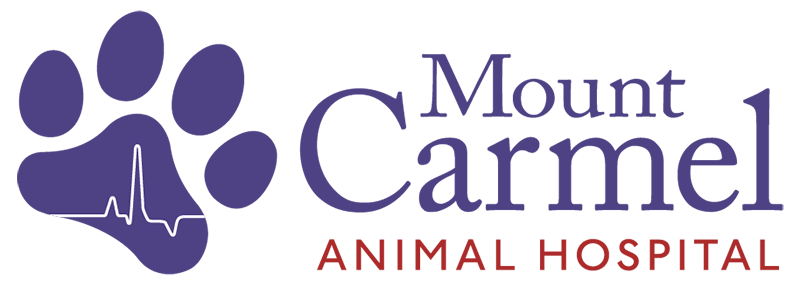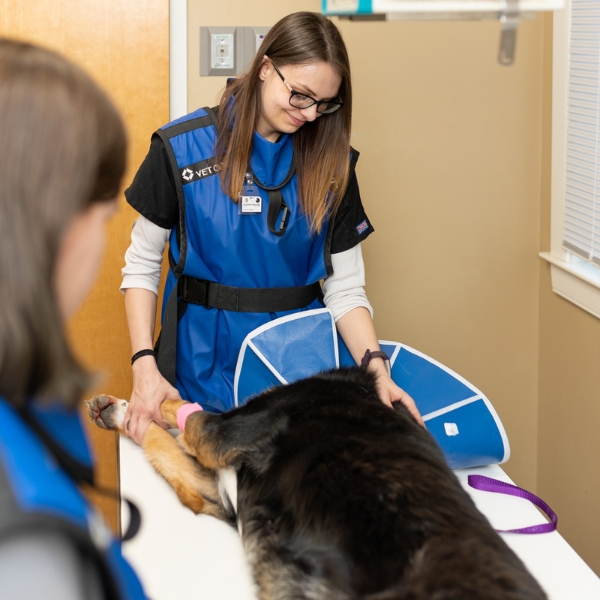Veterinary Surgical Services
We know surgery might sound scary or overwhelming for your pets. But, if your pet needs surgery and you live in the Hereford area, Cockeysville, Carroll Harford County, Southern York County, or another surrounding neighborhood, you are close to excellent care at Mount Carmel Animal Hospital.
Our experienced, skilled veterinary team can perform all of the elective and necessary surgical procedures your pet might require, including:
- Spays and neuters
- Tumor and mass removal
- Gastrotomy/enterotomy – opening of the stomach or intestines to remove a foreign object
- Cystotomy – bladder stone removal
- CCL Repair – knee surgery
- Enucleation – removal of the eye
- Splenectomy – removal of spleen
- Gastropexy – tacking of the stomach prophylactically or after gastric dilation/volvulus (commonly known as bloat)
- Amputations
- Soft tissue surgery
- Oral surgery
- Specialty surgeries including orthopedics and advanced soft tissue surgery
Surgery – What to Expect
We will provide a treatment plan and estimate prior to surgery. It is important to us that you understand our recommendations and all options available to you and your pet.
Most veterinary surgeries will require the use of general anesthesia. A full physical exam and pre-anesthetic bloodwork are always conducted prior to surgery. Our team will closely monitor your pet’s heart rate, blood pressure, blood oxygen levels, breathing rate, and body temperature throughout the procedure.
As soon as your pet’s procedure is complete, we will contact you to discuss how the procedure went and what you will be able to expect as your pet recovers. Our nursing team will monitor your pet and will work to keep him or her as comfortable as possible throughout the surgical procedure as well as during recovery. We may prescribe pain medication to ensure a restful recuperation at home and schedule a follow-up appointment with you to ensure your pet is healing as expected.
Preparing for Surgery
In preparation for surgery, your pet should not eat after 10:00 p.m. the night before or the morning of surgery. Water is fine, but if your pet is unusually thirsty, please limit its intake.
Special considerations for diabetic pets: Diabetic pets should not be fed or given insulin on the morning of surgery. The insulin will be administered based on their blood sugar that morning. Please bring your pet’s insulin with you to the hospital.
Check In
One of our surgical technicians will contact you the day before your pet’s procedure to schedule an intake appointment. All surgical patient intake is performed between 7:30 AM and 8:30 AM. Please allow up to 30 minutes for check-in. Most intakes can be completed in 15 minutes but depend on your arrival time and the number of patients scheduled.
During Check-In, you will be asked to sign a Treatment Plan Authorization form. If your pet is brought to the hospital by another individual, they will be asked to sign on your behalf. Medical services and procedures will not be performed without a signed consent form. Whenever possible, the estimate and authorization form is sent to you in advance of your pet’s appointment.
Safety
For their safety, all dogs must arrive and leave on leashes, and all cats must arrive and leave in carriers. If you do not have a carrier for your cat, a secure box with adequate ventilation will suffice. We are also happy to lend carriers for transportation to and from the hospital. Please contact us at frontdesk@MCAHonline.com to make arrangements.
What to Expect After Anesthesia
- Groggy, sleepy, or agitated on the first day
- A small amount of blood around the surgery site for the first day and some swelling and redness for up to a week
- Mild coughing for the first day or two in your pet was intubated during the procedure
- Eyes that look weepy — sometimes an ointment is used during surgery to keep eyes moist
Preparing for Recovery at Home
- Your pet will need rest following anesthesia. Plan to keep him/her confined in a crate or small room the first few days away from other pets and small children.
- Favorite treats or Pill Pockets can be very helpful in administering medications.
- Anesthesia used during surgery can upset the stomach. Offer a small meal initially. Consider serving white rice and boiled chicken or taking home a can of Purina EN.
- Your pet may need to wear an E-Collar for a few days to prevent licking the incision site. Most pets become accustomed to this quickly. Some clients prefer to pick this up in advance so their pet can get used to wearing it prior to surgery. We offer hard, soft and inflatable options. We also offer a surgical “onesie” which works well for some pets, depending on the location of the area that needs to be protected from licking or scratching, and your pet’s personality.
- Consider bathing your pet prior to surgery – if sutures or staples have been used to close an incision, your pet may not be bathed or swim for 10 days following surgery.
- Depending on the nature of your pet’s surgery, the doctor may recommend that running, jumping, and playing should be restricted for a period of time.
- For cats, consider using shredded paper or Yesterday’s News pelleted litter instead of cat litter for 7-10 days. Dust from the litter can sometimes irritate the incision area.
- Outdoor cats should be kept indoors, if possible, for 7-10 days or until suture removal if applicable. This will permit you to restrict activity, keep the incision clean and monitor recovery.
In addition to the general guidelines above, here are some tips on what to expect following some common surgical procedures:
What to Expect after Dental Surgery
- Mild bleeding from gums following cleaning and scaling of teeth.
- If extractions are required, soft food may be preferred for 7 days while gums heal. Many dry foods can be softened by adding water. Other options are canned foods or white rice and boiled chicken.
- Your pet will likely go home with antibiotics and pain medication if extractions are performed.
- Put away chew toys for a while. Don’t allow your dog or cat to do any heavy chewing immediately after their teeth cleaning.
- For outdoor cats, keep him/her inside overnight if possible so that you can monitor recovery.
What to Expect after Spay/ Neuter Surgery
- Your pet will need to wear an E-Collar for a few days to prevent licking the incision site. Most pets become accustomed to this quickly. Some clients prefer to pick this up in advance so their pet can get used to wearing it prior to surgery. We offer hard, soft and inflatable options.
- Your pet may not be bathed or swim for 10 days following surgery – consider bathing your pet prior to surgery.
- For dogs, short walks with a leash are great as your pet feels able, but running, jumping, and playing should be restricted for about a week. For cats, consider using shredded paper or Yesterday’s News pelleted litter instead of cat litter for 7-10 days. Dust from the litter can sometimes irritate the incision area.
- Outdoor cats should be kept indoors, if possible, for 7-10 days or until suture removal if applicable. This will permit you to restrict activity, keep the incision clean and monitor recovery.

